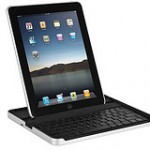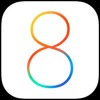For the past two years, I have used the M1 MacBook Air as my desktop. The Air replaced an aging 27″ iMac 2013. In general, the M1 Air performed the role of desktop well with certain drawbacks.
- Port Selection
- Desktop Clutter
- No VirtualBox support
- Memory
Port Selection
The m1 MacBook Air comes with two Thunderbolt ports and nothing else. In order to use the Air as a desktop, I had to add the use of the OWC Thunderbolt 3 dock. While the new dock provided the needed capabilities, it also led to the next drawback.
Desktop Clutter
When you add a dock, you also add the clutter. Along with the Twelve South BookArc for the Air, the external drives and cables plugged into the dock consumed a large amount of desk space.
No VirtualBox Support
One drawback that cannot be solved by the Apple M1 architecture is the lack of virtualization support for Intel-based Virtual Machines (VMs). I note this as “VirtualBox”, but it also applies the ParallelsDesktop for Mac. In my move to Apple M1, I had to abandon a number of VMs I used from time to time.
I did install Parallels Desktop for Mac with M1 support along with the ARM version of Microsoft Windows 10 and Microsoft Windows 11. But to solve the VirtualBox issue, I added a low cost mini desktop, the MinisForum HM90.
With the mini PC, I salvaged the use of my collection of VirtualBox VMs. The mini PC provides a well-performing solution.
Memory
But running VMs on the AIR proved to be challenging for the 16 GB of RAM available to the Air. In general, the system performed well, but there were times when memory levels were taxed.
For 2023, I decided to replace the Air with a new Mac. For that new Mac, I chose the 2022 Mac Studio base model. The base model provided solutions to most of the drawbacks.
Ports
Ample ports on the Mac Studio. I added even more with the addition of the QwiizLab USB-C dock. The dock added even more ports, but, more importantly, it provided a means to eliminate…
Desktop Clutter
With the QwiizLab USB-C dock, I added a 2.5″ and a M/2 nVME SSD drives. Now I have fewer external drives hanging off the computer.
Memory
The 32 GB of memory available on the Mac Studio base model appears to have calmed the stormy sea of RAM use.
No VirtualBox Support
I am now left with my final and, at present, insurmountable issue of running Intel-based VMs. The MinisForum HM90 is still providing the solution for this drawback.
I freely admit that the replacement of the 2020 MacBook Air with the 2022 Mac Studio was more a case of wanting new hardware than a “must have” decision for support my work flow. But, I am pleased with the outcome.
Share on Facebook














